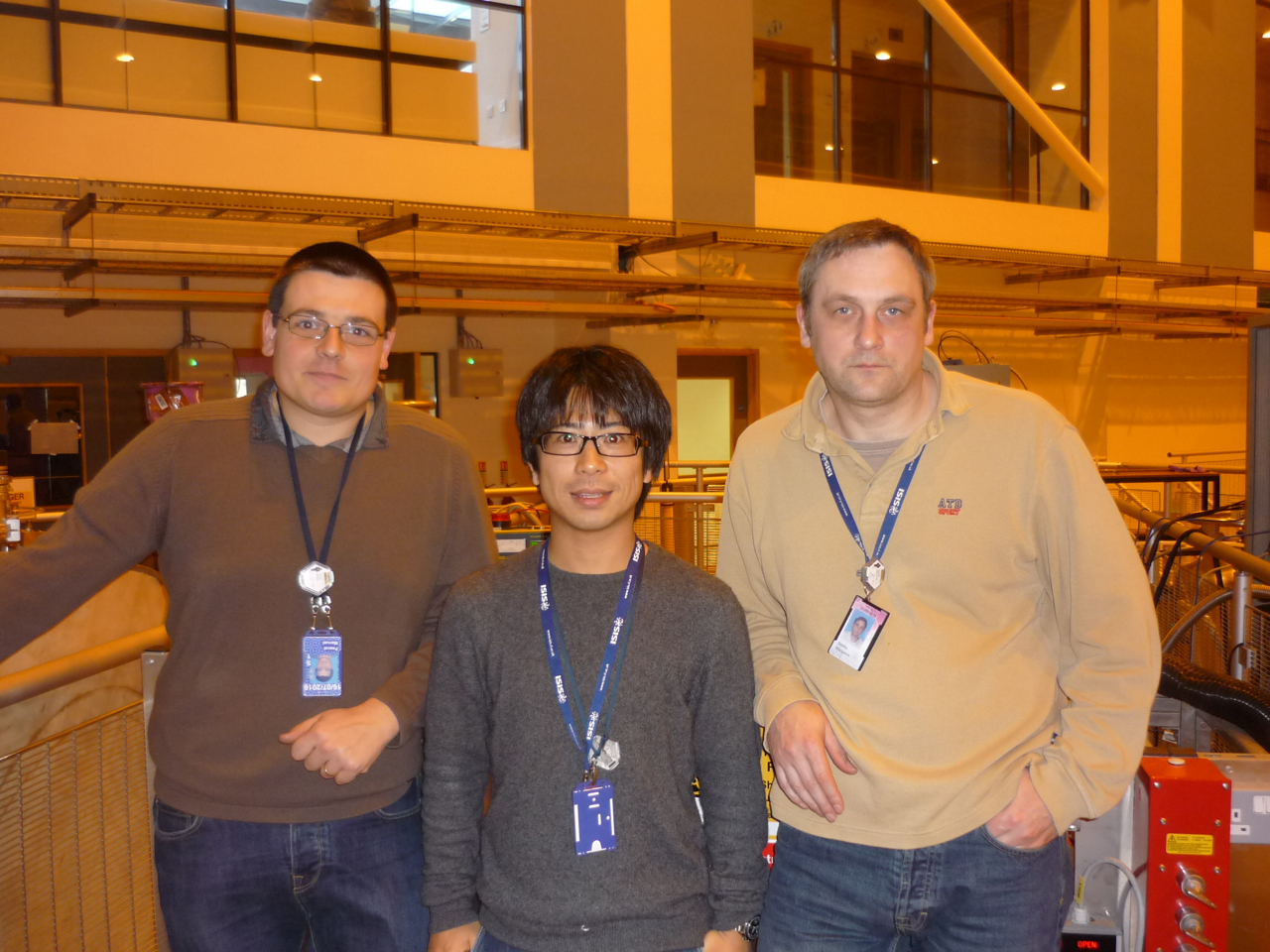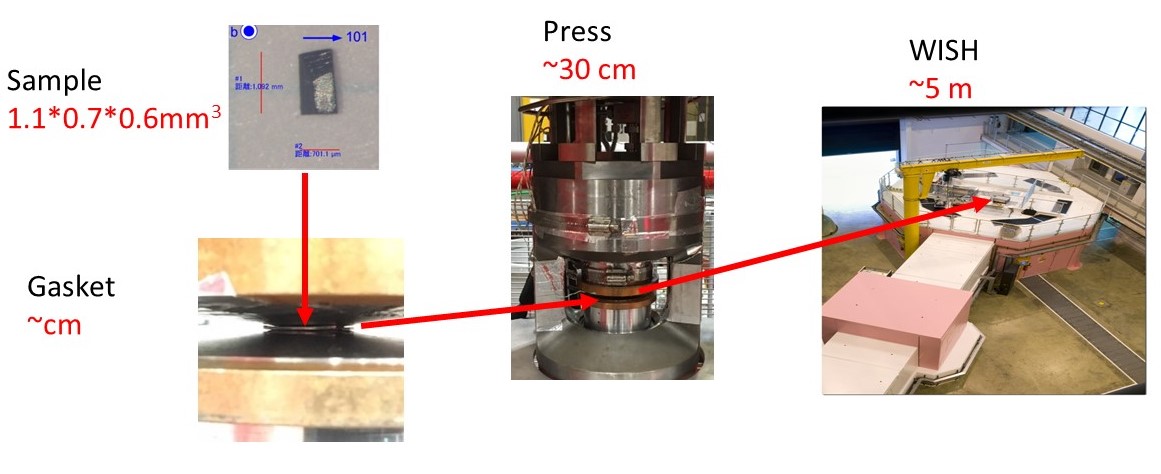Multiferroic materials are those that can exhibit both magnetic and ferroelectric properties at the same time. This unusual behaviour makes them subject to some remarkable physics, and candidates for future data storage materials, especially if type-II multiferroicity is present, and there is strong coupling between the two properties. However, most multiferroic materials only exhibit these properties simultaneously at very low temperatures.
The transition temperature below which this behaviour occurs is related to the magnetic exchange interactions in the material. Being able to manipulate these using pressure or chemical doping could lead to the ability to raise this temperature to make the materials display these complex properties at temperatures that enable practical applications.
In this study, published in Physical Review Letters, researchers used single crystal neutron diffraction on the WISH beamline at ISIS to find that, by using high pressures, the two properties can be present at once at room temperature in the material CuO. Although it had been predicted that the transition temperature above which the multiferroic phase of CuO exists could increase under pressure, and possibly reach room temperature, the community was divided as to whether this was actually the case.
This is the first experimental study that has been able to show that the multiferroic phase does indeed exist at room temperature. As well as their experimental studies, the group developed a new model to describe the system that maps onto its real-life behaviour.
 The idea for the experiment came after the researchers picked up a theoretical paper towards the end of 2013 that predicted an increase of the transition temperature with pressure. At the time, Noriki Terada from the National Institute for Materials Science in Japan was a long-term visiting scientist at ISIS and the University of Oxford, working closely with WISH beamline scientist Pascal Manuel (both pictured, above right, with Dmitry Khalyavin). This led to a perfect combination of expertise in studying magnetic materials on WISH that had both a small physical size and small magnetic moment, as well as high quality sample availability at the University of Oxford. Their collaborators in Oxford, Andrew Boothroyd and Dharmalingam Prabhakaran, had been studying the same material with inelastic neutron scattering and so an experiment was quickly proposed and performed before Noriki's final days at ISIS as a visitor.
The idea for the experiment came after the researchers picked up a theoretical paper towards the end of 2013 that predicted an increase of the transition temperature with pressure. At the time, Noriki Terada from the National Institute for Materials Science in Japan was a long-term visiting scientist at ISIS and the University of Oxford, working closely with WISH beamline scientist Pascal Manuel (both pictured, above right, with Dmitry Khalyavin). This led to a perfect combination of expertise in studying magnetic materials on WISH that had both a small physical size and small magnetic moment, as well as high quality sample availability at the University of Oxford. Their collaborators in Oxford, Andrew Boothroyd and Dharmalingam Prabhakaran, had been studying the same material with inelastic neutron scattering and so an experiment was quickly proposed and performed before Noriki's final days at ISIS as a visitor.
As Pascal explains, there was more to it than just a simple measurement: “There were several predictions about the pressure range needed to reach room temperature multiferroicity in CuO. We had hoped to quickly show the effect with our 'standard' cell. During the first experiment, our sub-millimetre sample, aligned to within a degree and carefully cut to fit within the gasket, broke. We also discovered we needed higher pressure."
He adds; “In the end, we had to use several pressure cells due to the requirement for higher and higher pressures, and various temperature ranges. We broke a few more samples, anvils and even part of the instrument at some point! We also had to rope in the help of the PEARL instrument scientists Chris Ridley and Craig Bull to modify the existing Paris-Edinburgh cell setup to make sure we could reach the highest temperatures and pressures. After another delay due to Covid, we finally managed to get the conclusive data last year, although this did involve Noriki joining myself, Dmitry Khalyavin and Fabio Orlandi on WISH by Zoom from Japan for the critical last few points. This allowed our theorist collaborators, Ryota Ono and Igor Solovyev, to refine our understanding of how CuO works on a microscopic level, and can be tuned by pressure, paving the way to possible new materials design."
Indeed, by being able to prove that multiferroic behaviour can be present at room temperature, this study opens up a route to developing materials that could be used under the normal operating conditions of electronic devices.
Pascal adds; “The paper was described as 'technically perfect' by the editor, which is a nice reward. It is a great example of how tenacity and believing in your ideas pays off in the long run. The study was a human adventure as well as an interesting piece of science."
Further information
The full paper can be found at DOI: 10.1103/PhysRevLett.129.217601
